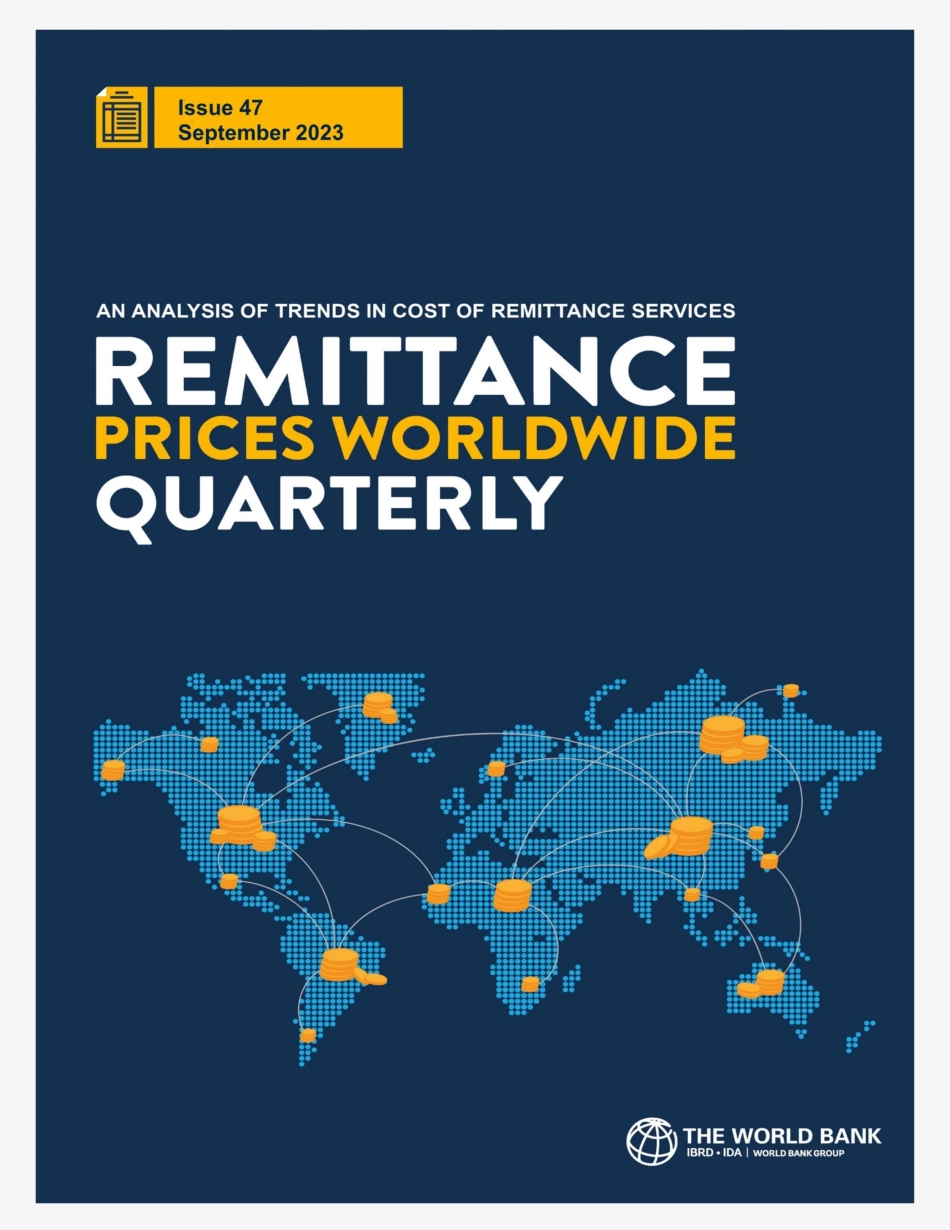Remittance Prices Worldwide - Issue 47, September 2023 03 Remittance Prices Worldwide - Issue 47, September 2023 2 This Report reflects the latest trends observed in the data published in September 2023. Remittance Prices Worldwide is available at http://remittanceprices.worldbank.org © The World Bank Group, 2023 Remittance Prices Worldwide - Issue 47, September 2023 3 Key findings • The Global Average decreased from 6.20 percent in Q2 2023 to 6.18 percent in Q3 2023. • The International MTO Index experienced a decrease over the quarter to 6.29 percent in Q3 2023, from 6.46 percent in Q2 2023. • The Global Weighted Average increased to 4.78 percent in Q3 2023 from 4.53 percent in Q2 2023. • The Global SmaRT Average for Q3 2023 was recorded at 3.36 percent (down from 3.55 percent in Q2 2023). Twenty-two corridors did not have any SmaRT qualifying services. • The Digital remittances index increased from 4.60 percent in Q2 2023 to 4.84 percent in Q3 2023. • The Digital-only MTO index experienced an increase to 3.92 percent in Q3 2023 from 3.61 in Q2. • South Asia remains the lowest cost receiving region, with an average cost of 5.44 percent. Sub-Saharan Africa remains the most expensive region to send money to, recorded at 7.39 percent total average cost in Q3 2023. • Banks remain the most expensive type of service provider, with an average cost of 11.48 percent. • The proportion of corridors with average costs of less than 5 percent has increased considerably since Q1 2009 (from 17 percent to 37 percent in Q3 2023). • In Q3 2023, mobile money remains the lowest cost instrument to originate remittances and was also the lowest cost instrument to receive remittances. • Due to the ongoing Russia-Ukraine war, RPW did not include any data on corridors originating in the Russian Federation in Q1 and Q2 2022. In Q3-Q4 2022 and Q1-Q3 2023, only publicly available Overview Remittance Prices Worldwide (RPW) monitors remittance prices across all geographic regions of the world. Launched in September 2008, RPW monitors the cost incurred by remitters when sending money along major remittance corridors. RPW is used as a reference for measuring progress towards global cost reduction objectives, including the G20 commitment to reduce the global average to 3 percent, which is being pursued in partnership with governments, service providers, and other stakeholders. Since Q2 2016, RPW covers 48 remittance sending countries and 105 receiving countries, for a total of 367 country corridors worldwide. RPW tracks the cost of sending remittances for four main RSP types: Banks, MTOs, Mobile Operators, and Post Offices. MTOs include both traditional providers and innovative/fintech players. On average, 21.5 services per corridor are tracked. This Report uses data from RPW’s most recent release to analyze the global, regional, and co...


